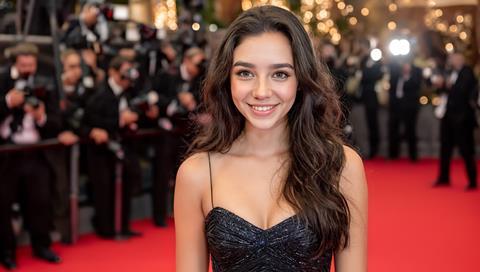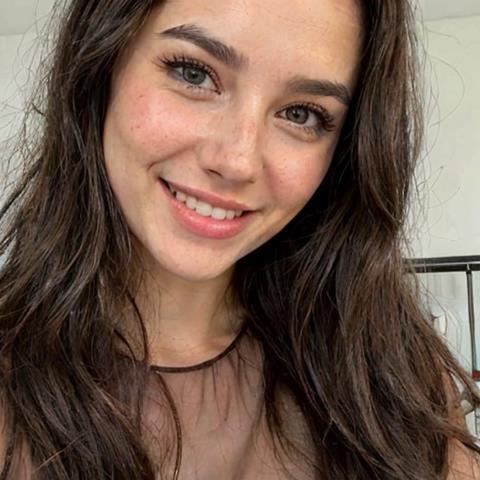Particle 6 wants AI creation Tilly Norwood ‘to be the next Scarlett Johansson or Natalie Portman’
Meet Tilly Norwood, an up-and-coming on-screen talent who might just be the next big thing.
Norwood, as can be seen in the exclusive clip above, appears to be a talking, waving, bona fide person - she can even cry.
Except she’s not a real-life person: she doesn’t exist off a screen (yet), having instead been birthed via the increasingly sophisticated capabilities of AI software.
But then again, so has the entire sketch above, including all the other actors you see.
Norwood and the sketch are both the work of Particle 6, the UK production company created and led by Eline van de Velden, a former actor-turned-producer who also happens to have a Master’s degree in physics from London’s Imperial College.
“We want Tilly to be the next Scarlett Johansson or Natalie Portman, that’s the aim of what we’re doing,” van der Velden tells Broadcast International.
Friend or foe?
Before we go too much further, the timing of all of this is worth noting.
Not too long ago, AI was seen by many in the industry as a negative and something to push away at all costs (remember the US writers strikes?). Yet today, it is being embraced by an increasingly large swathe of the industry, partly because it offers a way around the seriously tough economic conditions that producers, in particular, are operating in.
“People are realising that their creativity doesn’t need to be boxed in by a budget - there are no constraints creatively and that’s why AI can really be a positive,” van der Velden continues. “It’s just about changing peoples’ viewpoint.”
Broader industry adoption is also likely being driven by the fact that AI tech capabilities are accelerating rapidly and there is no option but to be involved.
“There’s so much tech that’s changing, especially around consistency - that was a problem even just a few months ago, especially with environments,” says van der Velden. “Now with characters you can just take them from photographs, it’s all just constantly evolving.”
Sketching out the future
The clip above is a timely example of where AI is currently at. Van der Velden has written and starred in (traditionally produced) comedy shows before, so she knows the genre and its challenges, but creating a show out of AI took a different approach.
She initially worked with Chat GPT to generate the script, describing the software as “sort of a writing partner”, detailing the topics and the target audience. “And I briefed in details about the industry, the types of things that are funny about our business.”
It was, she says, a similar process to briefing a (real human) writer. “It would come back to me with ideas and I would be an exec producer effectively, we worked together. I then got feedback from lots of people and we adapted constantly.”

Next, van der Velden moved onto the visual side of things, divvying up the text between the characters and ensuring they had the prompts to deliver their lines with the right tone and nuance.
“There were so many iterations - I mean, it took a long time, I’m not going to lie. And it’s also about performance, right, because every one of these characters will say the lines differently and you need to instruct them differently.”
The Particle 6 chief points to the part of the sketch when the narrator asks whether Norwood can cry on Graham Norton.
“At first, the line was pronounced as, “but can she cry on Graham Norton”, with the wrong emphasis. And we needed the voice to be more doubtful, so you’re really trying to find the words to describe the emotion. It’s like instructing an actor really and for me it was very much about getting the right performance out of the AI actors because if they’d say it in a wooden way, it wouldn’t have worked at all.”
It is, perhaps, best described as AI directing.
There were endless tweaks – at one point, the sketch had almost 20 characters – while the creation of Norwood has taken much longer still. The character has been built via endless prompts, each of which are designed to ensure she appeals to the right demographics to support her on-screen career.
But there is also flexibility, in the same way that AI can free up the creative process on filmmaking, the Particle 6 boss explains, with a show able - almost – to be reverse engineered.
“In a normal shoot, you’d likely have the script almost perfect and then you film it, but once it’s done you can’t really change anything about it. With AI, once you’ve got the footage, you can still change the script, so you can refine it in a different way and refine it more even within the edit. You can just say, oh, change that line completely.”
The process is ongoing, with constant refinement. Ten pieces of AI software have been used to create the final two-minute sketch, with Van der Velden estimating that it took her around a month in total. Extrapolate that with a bigger team working every day on the subject matter and the implications are clear.
“As a comedy person with ambitions to do more in this space, for me, it was extremely creatively fulfilling,” she says, underlining her belief that AI is opening up routes to market for ideas rather than shutting them down.
Talent agency discussions
The sketch is also acting as the first on-screen appearance for Norwood, and discussions are now in the works to see if talent agencies want to sign up the AI creation. Talks are underway that could see her feature in movies and a raft of other projects are also being explored, most covered by NDAs.
And while none of this is entirely new – fashion brand H&M said in late March that it planned to use AI to create digital twins of models – the expectations and ambitions around Norwood and AI talent as a whole are great, with industry adoption only seeming to increase.
“We’re seeing the change in some of the bigger broadcasters and studios going from ’Oh, I don’t think AI is for us, or we’re not ready and we’re scared, to saying, oh my gosh, we have got to get on board now’,” says former Sony and A+E Networks exec Tom Davidson, who was named Particle 6’s first chief commercial officer earlier this week.
“Literally in the last three months, I’ve seen a huge change with the bigger groups from saying this will happen at one point in the future to we have got to get on this now.
“And a lot of that’s coming from the next layer down,” he adds, highlighting the cost-efficiencies AI can deliver. “I’m hearing a lot of producers being asked for the same quality but with 25% less budget, but how can you do it? That’s very, very difficult – but AI can play a huge role in supporting that.”
But at this rate of change, where will be in a decade?
“We’ll have AI talent and then we’ll also have real talents,” says van der Velden. “But real talents will probably have an AI digital twin of themselves, so they won’t have scheduling conflicts in the same way they do now,” van der Velden predicts.
“Or if they need to do retakes and they’re already moved on to the next shoot, that will be no problem. That is definitely the future.”
But van der Velden also suggests that it’s worth looking back to the middle of the last century to appreciate how talent was viewed then and how it may be seen in the future. “In a way, I’d say we’re going back to the 1950s, when the talent was part of the studio,” she suggests.
| Software used to create Particle 6 sketch | |
|---|---|
| ChatGPT | Used to generate, iterate, and polish the script |
| Veo3 | Character + Voice creation - text-to-video & frames-to-video generations |
| Seedance | Image-to-video generations |
| Imagen 4 | Character generations (stills) |
| Runway + Flux | Character variations/copies + environment variations |
| Elevenlabs | Voice copies + fixes |
| Adobe Podcast | Audio fixes |
| Premiere Pro | Editing + grade |
| Topaz Bloom | Image upres |
| Topaz Video AI | Video upres |
In the nearer term, the Particle 6 chief believes shows created entirely via AI software will bow on TV screens within 12 months, while roles within TV production will evolve at pace.
People “will dip their toes in with a bit of VFX replaced with AI or with a reshoot done with AI,” she explains. “The TV industry is a tech-enabled industry - we are always using new cameras, new editing software and new tools - so the skills we need change, but there will be jobs because the need for content is not going anywhere. But you need to know how to use the tools.”
For van der Velden, the argument is simple. “AI speeds everything up. So instead of me taking three months to get a comedy script, I would do it in a month. Instead of me taking three days to film the comedy, I can do it in a day.
“It cuts down the timeline for everything, but there are still all those human touchpoints and human creative checks at every stage along the way. AI doesn’t have an intrinsic desire to create anything, so unless it’s coming from us, it’s not going to do anything.
“And that’s why I’m not scared, it can’t take my creative desire away from me.”
It is transforming the production industry, however, and regulation remains a hot topic. Van der Velden says she “strongly believes” that outputs should not be plagiarised, but effective and unique use of prompts are, she argues, a similar function to directing.

“When you hire a director, you want them to deliver something wholly original and that’s the same thing with AI tools.” But what about the training mechanism behind AI?
“That is something between the tech companies and the rights holders who are fighting it out, and who pays how much for the library that [the AI software] is trained on,” she says.
“But I would say that when I employ a director, I don’t question them on whether they’ve paid licenses for everything that has trained them… [and] made them into the directors they are.”
For now, Norwood and her Hollywood dreams are just that, but ultimately any success will come down not to AI but audience reaction.
And for van der Velden, there is no reason to believe that AI talents, and indeed shows entirely created by AI, will not be embraced by viewers as long as they’re getting top-notch storytelling.
“I feel like there’s an equal emotional connection between AI-generated content and real content,” she adds, although perhaps the real question is whether we can even tell the difference anymore.
To find out more about how AI is transforming the industry, be sure to attend the AI Creative Summit at BFI Southbank, London, on 18 November. Click here to find out more.









3 Readers' comments